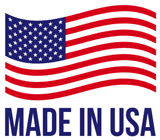Pharmaceutical drugs have been recognized as beneficial in our society. This has been tremendous in the advent of medicine and for taking care of our health. Over the years, pharmaceutical drugs have become more accessible as more of these are bought over the counter and some without prescriptions.
But did you know that these pharmaceutical drugs are present in your drinking or tap water? Access to pharmaceutical drugs through your drinking or tap water poses health risks instead of having its medicinal benefits.
These pharmaceutical drugs found in water can be coming from your neighbors, industrial plants, antibiotics, and finally from you. When you don’t want the medication of another person to be your medication. How much more if their medications are present in your drinking or tap water?
Contaminated water is to be avoided at all costs. We know that medications are beneficial to our health but that is not to say that traces of them in water are safe. Using water filters or other methods can help traces of chemicals out in your water.
Pharmaceutical Drugs in Water
Pharmaceutical drugs are used for treating, curing, and preventing some diseases. Pharmaceutical drugs are commonly referred to as medicine or medications. They can be bought over the counter or with doctor’s prescriptions.
Pharmaceuticals are not only associated with humans but also with animals. Veterinary pharmaceutical drugs and human medicines are beneficial when handled properly and with correct supervision.
How do pharmaceuticals get in the water?
According to the World Health Organization, the presence of pharmaceuticals in water comes in different ways. When taking medications, not all of the medication is absorbed by the body and metabolized.
The unmetabolized portion of the medicine goes with the excretion of our body. These excretions find a way to sewages. These sewages are treated by wastewater treatment plants that produce clean water for the environment.
The sewages can have leakages. The pharmaceuticals seep through these leakages in ends with either to groundwater, through seeping through soil, or with surface water. Pharmaceuticals can also get into the water even if they are treated by wastewater treatment plants.
Most simple wastewater treatment plants don’t have the technology to remove these pharmaceuticals as they focus more on the removal of oils and particulates seen by the naked eye. Pharmaceuticals, therefore, are still not removed and get into the ground or surface water.
Effluents from the drug manufacturing plants still have the most effect on pharmaceutical contamination of water. Wastewater treatment plants with incorporated advanced technologies such as reverse osmosis and nanofiltration remove pharmaceuticals with 95% and above effectiveness.
Pharmaceuticals from veterinary drugs and feed additives are more prone to lead to our water. They come in liquid manure excretions and directly land to the soil. The runoff from the soil brings these excretions to either ground or surface water.
The source of tap water, or even bottled water, comes from these surface or groundwater. Pharmaceutical contamination of the sources of water can also come from the improper disposal of medicine coming from drainages and trash bins.
What are the pharmaceutical drugs commonly found in water?
Several pharmaceuticals are found in water. Antibiotics, hormones, mood stabilizers, and other medications are found in trace amounts in our sources of water. The pharmaceuticals found in water can be as low as parts per billion (ppb) up to parts per million (PPM).
Here are some pharmaceuticals found in water:
- Medication for treating high blood pressure has been discovered in wastewater treatment facility supplies. Not only is this a regularly detected substance, but it is also found in large quantities.
- Endocrine-Disrupting Chemicals (EDCs) released into the environment may cause endocrine-related disorders in humans, which are growing in wildlife and modifying human reproductive health, such as falling male fertility, birth abnormalities, and breast and testicular cancer. EDCs also affect the organism’s hormones.
- Ethinylestradiol compounds are used as steroid estrogen analogs in the feminine pill and subsequently released in the environment through wastewater treatment plants in the form of effluent.
The natural feminine hormones estrone, 17-estradiol, and estriol were found to have no impact concentrations of up to 6 ng/L, 2 ng/L, and 60 ng/L, respectively, which is 20 to 600 times higher than the permitted limit.
- Pharmaceuticals such as tamoxifen and cyclophosphamide, which are used to treat breast cancer, and ifosfamide, which is used to treat a wide range of cancers, have already been found in surface water.
- Caffeine has also been found in drinking and tap water. This is because the human body cannot digest or absorb all of the caffeine consumed. Caffeine is eliminated by the body and is flushed down the toilet.
- The use of cytostatic medicines has become a major environmental concern. They can be found in levels as high as 2.12 104 mg/l in the surface, ground, and drinking water.
The current state of knowledge concerning their adverse effects on people does not indicate a considerable risk to water users’ health, while it does point to specific vulnerable groups, such as youngsters and breastfeeding women.
What is the effect of Pharmaceuticals on water?
Pharmaceuticals are not a new phenomenon and are already monitored since the late 1990s. Pharmaceuticals found in sewages can potentially contaminate drinking water.
Scientists started to look at the effects of oral contraceptives first and eventually expanded to other drugs.
How does it affect people?
Pharmaceuticals as contaminants in water and their effect on people are still unknown. Levels of these possible contaminants are still low and are expected to rise as modernization follows. Medicines still play a great role in the impact of human health.
How does it affect the environment?
Although no conclusive harmful effects are found in human beings, pharmaceuticals have their downside to some fishes.
One example is its effects on smallmouth bass where male fish produces eggs. This is highly attributed to endocrine disruptors that produce intersex phenomena for fishes.
The Bottomline
Pharmaceutical drugs in water are very low in parts per million and currently have no significant effect on human health. But as modernization and the need for medication increases, we should still be wary of pharmaceuticals found in our drinking or tap water.
Signs of the negative effects of pharmaceuticals were already found in fishes and it’s not too late to do something about it. Using a water filter, proper medicine disposal, lessening unmetabolized medicine, are some ways to reduce pharmaceutical contamination of water.






